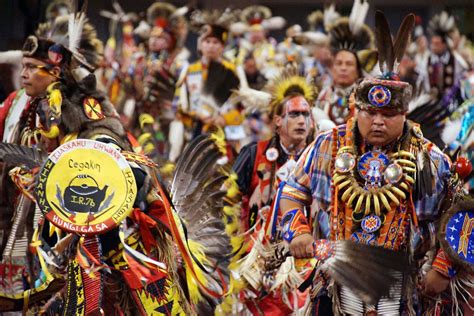In the heart of Oklahoma, a vibrant tapestry of Native American heritage lives on, weaving stories of resilience and renewal. Their journey, marked by both trials and triumphs, continues to shape the cultural fabric of the state. Despite the challenges they face, the spirit of the Native American people remains unyielding, pushing them towards a brighter future.
Life for Native Americans in Oklahoma has been marked by complexities and challenges, and these are not ignored. Historical injustices, cultural assimilation, and economic disparities have often burdened their communities. Yet, through adversity, they have retained their cultural identities and traditions, inspiring admiration for their unwavering spirit.
The Native American population of Oklahoma is a diverse mosaic of tribes, each with their own unique history, culture, and traditions. They have fought for their rights, preserving their ancestral lands and cultural heritage. Today, many Native American tribes in Oklahoma are actively engaged in economic development, education, and cultural preservation, working to improve the lives of their people.
Their journey is an ongoing one, filled with both challenges and triumphs. The Native American people of Oklahoma continue to navigate the complexities of modern life, seeking to honor their heritage while embracing new opportunities. Their resilience and determination serve as a reminder of the indomitable spirit that has carried them through generations.
Native American Tribes and Their Enduring Legacy in Oklahoma:
From the rolling plains to the majestic mountains, Oklahoma stands as a testament to the rich cultural heritage of Native American tribes. Their history, traditions, and contributions have indelibly shaped the tapestry of this state, making it a vibrant hub of diversity and resilience. This article explores the enduring legacy of Native Americans in Oklahoma, delving into their unique experiences, challenges, and triumphs.
**
Oklahoma is home to 39 federally recognized Native American tribes, each with its distinct language, culture, and traditions. The rich diversity of these tribes contributes to the state’s vibrant heritage, showcasing the resilience and adaptability of Native American communities.
**
The artistic expressions of Native Americans in Oklahoma are diverse and captivating. From intricate beadwork and pottery to vibrant paintings and sculptures, these art forms reflect the tribes’ deep connection to their ancestral lands and cultural heritage.
**
Native American ceremonies hold immense cultural and spiritual significance, serving as a bridge between generations and connecting communities to their ancestral traditions. These ceremonies often involve traditional music, dance, and storytelling, fostering a sense of unity and shared identity among tribal members.
**
The concept of tribal sovereignty is central to the identity and autonomy of Native American tribes in Oklahoma. This inherent right to self-governance allows tribes to exercise control over their lands, resources, and internal affairs, ensuring the preservation of their cultural heritage and traditional ways of life.
**
The history of Native Americans in Oklahoma is deeply intertwined with land rights and treaties. The forced removal of tribes from their ancestral lands during the 19th century has had lasting consequences, leading to ongoing legal battles and efforts to reclaim and restore tribal territories.
**
Native American tribes in Oklahoma are actively engaged in economic development initiatives, seeking to create jobs, stimulate investment, and improve the quality of life for their communities. These efforts range from establishing tribal businesses and enterprises to promoting tourism and cultural heritage preservation.
**
Education plays a vital role in preserving and revitalizing Native American cultures. Tribal communities are working to establish and enhance educational programs that incorporate traditional knowledge, language instruction, and cultural awareness, ensuring that future generations can carry on their heritage.
**
Native Americans in Oklahoma face significant health disparities compared to the general population. Addressing these disparities requires concerted efforts to improve access to healthcare, promote healthy lifestyles, and address the underlying social and economic factors contributing to health inequities.
**
Native American tribes have a deep-rooted connection to the natural world and a commitment to environmental stewardship. Their traditional practices and teachings emphasize the importance of caring for the land, water, and air, contributing to the preservation of Oklahoma’s diverse ecosystems.
**
Community development initiatives play a crucial role in improving the lives of Native Americans in Oklahoma. These initiatives focus on addressing issues such as housing, infrastructure, and access to essential services, promoting safe and healthy communities where tribal members can thrive.
Conclusion:
The legacy of Native Americans in Oklahoma is one of resilience, cultural richness, and ongoing adaptation. Their contributions to the state’s history, culture, and economy are undeniable, and their presence continues to shape the identity of Oklahoma. By recognizing and celebrating their heritage, we can foster a spirit of understanding, reconciliation, and mutual respect, ensuring that future generations can appreciate the enduring legacy of Native Americans in Oklahoma.
FAQs:
- What are the largest Native American tribes in Oklahoma?
- The Cherokee, Choctaw, Chickasaw, Creek, and Seminole tribes are the five largest Native American tribes in Oklahoma.
- What is the significance of tribal sovereignty?
- Tribal sovereignty is the inherent right of Native American tribes to govern themselves and exercise control over their lands, resources, and internal affairs.
- How can I learn more about Native American culture in Oklahoma?
- Visiting tribal museums, attending cultural festivals, and engaging with Native American communities are excellent ways to learn more about their rich heritage and traditions.
- What are some of the challenges facing Native Americans in Oklahoma?
- Native Americans in Oklahoma face challenges such as poverty, unemployment, lack of access to healthcare, and the ongoing impacts of historical trauma.
- How can I support Native American communities in Oklahoma?
- Supporting Native American-owned businesses, attending cultural events, and advocating for policies that promote tribal sovereignty and economic development are ways to support Native American communities in Oklahoma.